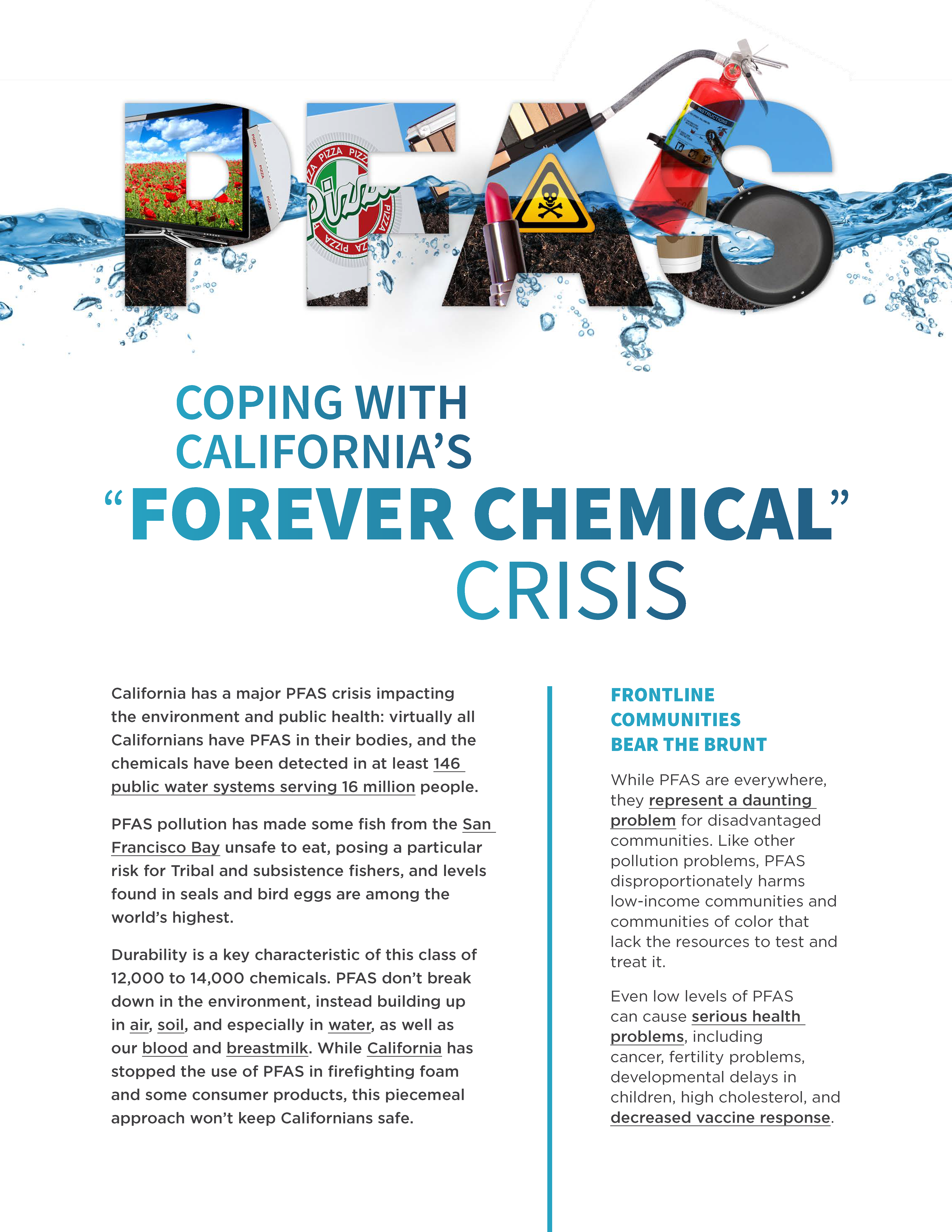California has a major PFAS crisis impacting the environment and public health: virtually all Californians have PFAS in their bodies, and the chemicals have been detected in at least 146 public water systems serving 16 million people.
PFAS pollution has made some fish from the San Francisco Bay unsafe to eat, posing a particular risk for Tribal and subsistence fishers, and levels found in seals and bird eggs are among the world’s highest.
Durability is a key characteristic of this class of 12,000 to 14,000 chemicals. PFAS don’t break down in the environment, instead building up in air, soil, and especially in water, as well as our blood and breast milk. While California has stopped the use of PFAS in firefighting foam and some consumer products, this piecemeal approach won’t keep Californians safe.
Frontline Communities Bear The Brunt
While PFAS are everywhere, they represent a daunting problem for disadvantaged communities. Like other pollution problems, PFAS disproportionately harms low-income communities and communities of color that lack the resources to test and treat it.
Even low levels of PFAS can cause serious health problems, including cancer, fertility problems, developmental delays in children, high cholesterol, and decreased vaccine response.
Health And Clean-Up Costs Are Going Through The Roof
A 2021 analysis estimated the annual health-related costs of PFAS in California at $40 billion. That does not even include the cost of testing and treatment, which will fall on consumers unless the state holds chemical companies responsible.
Contamination of rivers and groundwater is already making it more expensive to deliver
safe drinking water, with many cities having to shut down wells or invest in new treatment. In Orange County, residents could see bills go up $20 per month to cover close to $1 billion in PFAS treatment.
While PFAS testing in water has only been done in 3% of state water systems, two-thirds were found to contain multiple versions of these chemicals. The number is expected to rise as California embarks on a 2023 plan to test all public water systems.
We Need To Stop The Flow And Hold Polluters Accountable
With PFAS chemicals used in countless household and industrial products, it is impossible to avoid exposure. Unless we take action now to keep new PFAS out of our state, we will face far higher health and cleanup costs.
Since PFAS are everywhere, we need to work both upstream (stopping their production and use) and downstream (testing and treating current contamination). California has made some progress to date, but needs bold solutions that match the scale of this crisis.
That includes:
- Stopping The Use Of PFAS At The Source
Prevention is the best cure; we need to keep PFAS out of our communities and environment. California has already banned PFAS in firefighting foam, some children’s products, food packaging, cosmetics, and textiles, but this is just the tip of the iceberg. We must replace all PFAS with safer alternatives, except in rare cases where alternatives don’t exist and they serve an essential use for public safety and health. - We Need Transparency
In order to determine where contamination is coming from, and what uses may be essential, we need to know what consumer and industrial products containing the chemicals are coming into the state and where and how they are used. - Addressing Damage That Has Been Done
California not only needs to fund comprehensive testing of our water, soil, and air for PFAS contamination, we need to establish standards that protect the public from environmental exposure, including drinking water regulations for all PFAS and fish consumption guidelines in contaminated waters. - Making Polluters Pay
The tremendous costs of monitoring and treating PFAS, as well as the cost of managing the waste should be paid by those who have profited from their use and not California ratepayers who are suffering the consequences of these toxic chemicals. We need to hold chemical companies accountable.

